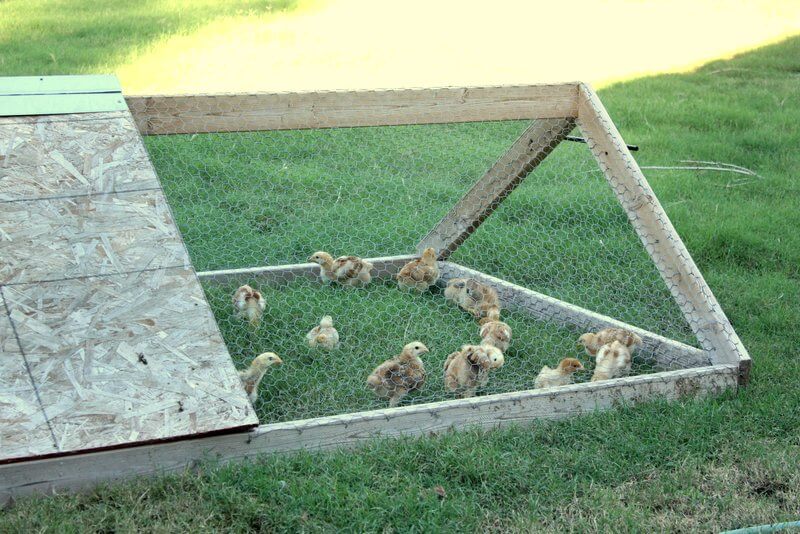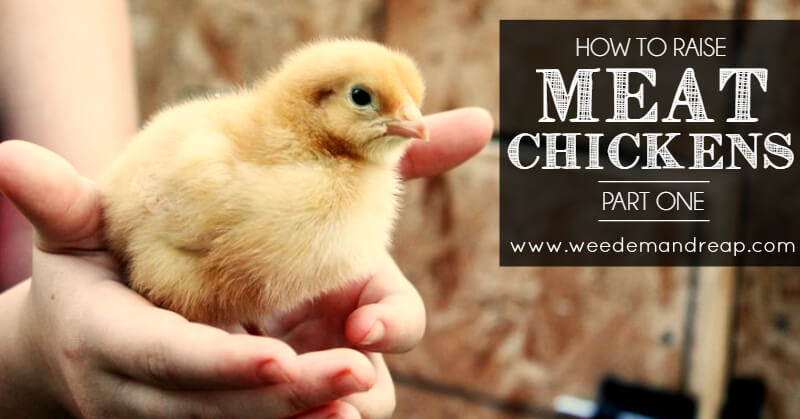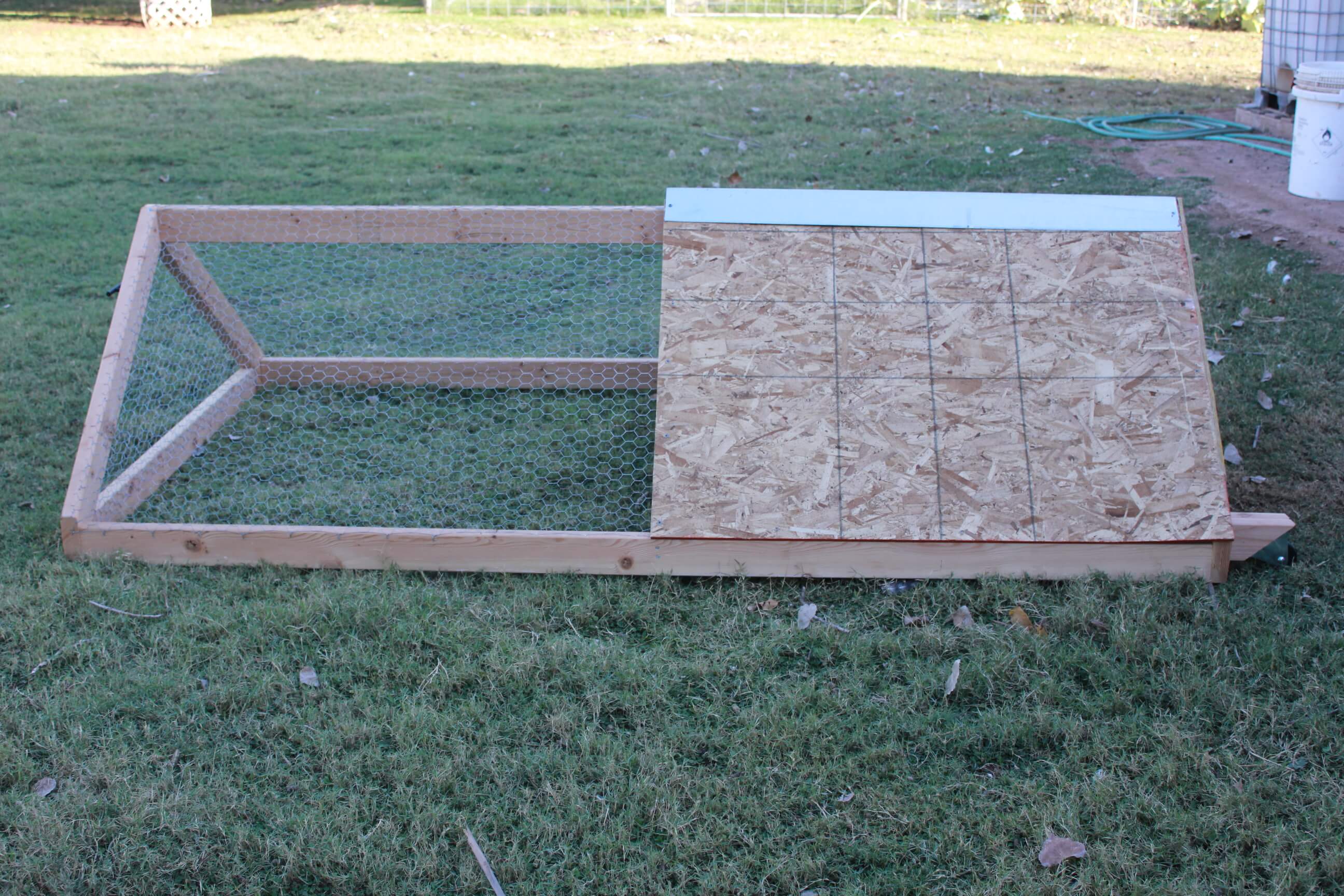 You want a freezer full of farm fresh chickens…
You want a freezer full of farm fresh chickens…
And you want to raise them yourself. Good for you! Every day more and more people are striving to get in touch with their food. And let’s face it, raising meat chickens and butchering them all by yourself is the real deal, folks.
Before we brought any sort of chicken here on the farm, I assumed I could buy some hens, let them lay eggs for me for a couple years, then turn them into a nice roasted chicken dinner. Sustainability at it’s finest, right?
Well, let’s just say that ain’t exactly how it works. While it’s true that you can wrangle an older laying hen and turn her into a dinner, that dinner just might not be the best tasting thing you’ve ever had, and here’s why.
“Dammit Jim, I’m a chicken, not a miracle worker!”
Here’s the scoop… You’ve got your laying chickens and broiler(meat) chickens. While *sometimes* there are breeds that are listed as dual-purpose (meaning they can be used for both), this isn’t entirely true. Laying hens have a body that is designed for laying. The best laying hens tend to be on the thin side, because all their energy goes into egg production. Meat chickens, on the other side, tend to be, well, meatier.
To get the best of both worlds, it’s best to have both worlds. We raise laying hens year-round, and once a year we raise a batch of meat chickens, specifically designed to provide us with chicken meat for the year. It takes about 8-12 weeks to raise a meat chicken to maturity, while it takes about 6 months to raise a laying chicken to maturity (when they start laying eggs). 8-12 week old mature meat chickens will have the freshest tasting meat, tender & juicy. Meat chickens are the way to go if you want the best tasting meat!
What to do with old Henrietta
When your laying hens become old and have significantly reduced in their egg production, this is the time a hen can be culled, which basically means you’re going to remove her from the flock and butcher her. Because an older laying hen’s meat will be tough, you’ll have two options. You can either use your old laying hen as a base for an awesome chicken stock, cooking it slow over 48 hours to bring out all the nourishing minerals, nutrients, & gelatin, or you can brine the meat to try to produce an edible, flavorful chicken.
How to Raise Meat Chickens: Part 1
Step 1 – Purchase baby broiler chicks.
The majority of farmers purchase meat chickens that grow to maturity in 8 weeks. 100 years ago chickens used to mature in 16 weeks, but with cross-breeding, hormone & soy feeding, chickens now reach maturity in 8 weeks.
Those of us who are more natural minded-opt for what’s called ‘heirloom chickens’, also known as ‘chickens who take longer to mature’. We purchase freedom ranger chickens because they won’t mature until 12 weeks. They also come from GMO-free parents.
Step 2 – Provide Shelter & Temperature
Because baby chicks are fragile, they’ll need protection from predators. Most chickens in general aren’t allowed to free range until they reach about 4 months of age, so you can guess that your meat chickens will need to be protected their entire life. The solution for this is to build what’s called a ‘chicken tractor’, invented by Mr. Joel Salatin himself.

As far as regulating the temperature, the amount of work you’ll have to do to maintain this will depend on your location. Baby chicks aren’t very good at regulating their temperature. They need 95 degrees for the first week, 90 the second week, 85 the next and so on. In Arizona, we love to raise our baby chicks in the fall. Because we are hovering around 95-100 degrees in September, we love to start raising our meat chicks in September, and as the temperature naturally cools, it naturally is the best environment for our chicks. Aside from a few near drownings in some wicked rainstorms in Arizona, it’s worked out well!
If you are raising baby chicks during a cold season, you can use a heat lamp to maintain their temperature. A good way to know if your baby chicks are warm or cold is to watch your baby chicks. If they are huddled in a corner they are cold. If they are walking around they are nice and warm:)
Step 3 – Provide Food & Water
We provide free-choice food & water, which means we give our meat chickens a constant source of food & water, and let them regulate their intake. Because we choose to raise our meat chickens GMO, soy, & corn-free, we purchase our feed from Blue Sky Organics, through my local co-op here in Phoenix. One meat chicken will eat about 15 pounds of food in the course of their life (about 12 weeks), so hopefully that will help you plan ahead as you estimate how much chicken feed you’ll need.
When providing for the protein requirements of a baby meat chick, most people will start with a chick starter feed (about 22% protein), then move to a chick grower feed (about 20% protein), and finally finish with a chick finisher feed (about 18% protein).
Because the only way to provide 22% protein feed is with soy, we decide to just feed our chicks on the grower for about 8-9 weeks, then move them to the finisher.
Step 4 – Watch ’em Grow
Meat chicks are pretty easy to care for from here. Make sure they have a clean environment and plenty of food & water, and they’ll be good to go!
In Part Two of this series (in about 10 weeks), I cover the finishing and butchering of the meat chickens.
 You want a freezer full of farm fresh chickens…
You want a freezer full of farm fresh chickens…


I like the article, but confuses when you say freedom rangers have no GMO parents – all chickens have no GMO parents. I would agree that Cornish cross hybrids only advantage is 8 week harvest, aside from that rangers are indeed far superior IMO.
Hi Kali-
You can read all about the Freedom Rangers on their website: https://www.freedomrangerhatchery.com/
Thank you -Bobbi (DaNelle’s Assistant)
“Baby chicks aren’t very good at regulating their temperature. They need 95 degrees for the first week, 90 the second week …”
Not at this temperature, certainly NOT! Water boils at 100 degrees!!!!
Hi Bill-
The degrees mentioned here are in Fahrenheit. Water boils at 212 degrees Fahrenheit and 100 degrees Celsius.
The 95 degrees, dropping to 90 degrees is what is suggested by nearly all ag extensions. You can read articles here that mention it.
https://smallfarms.oregonstate.edu/smallfarms/raising-baby-chicks
https://u.osu.edu/poultry/2016/04/02/raising-baby-chicks/#:~:text=Temperatures%20should%20between%2090%20%2D95,or%20ambient%20temps%20are%20reached.
https://extension.unh.edu/resource/brooding-and-caring-chicks
Thank you -Bobbi (DaNelle’s DaNelle’s Assistant)
Hi Tracey-
Meat chickens do lay eggs, DaNelle just doesn’t raise them from eggs. She orders chicks from different hatcheries which can be found in this article: https://www.weedemandreap.com/raising-meat-chickens-cost/
She has also purchased a chicken or two from her local farm store.
Thank you -Bobbi (DaNelle’s Assistant)
Where do you get meat chickens if they don’t lay eggs?
I want to place my meat chicks in a tractor when small but as they get bigger can I have them free range with my layers? I have a coop for my layers and they get locked up at night and out in the morning… can all the chickens share the area?
Hi Cherish-
Yes, you can keep them together as long as you have enough space for all of them and you aren’t needing to feed them differently.
Thank you -Bobbi (DaNelle’s Assistant)
How many meat chickens can fit in a 64 sq feet tractor would you say?
Hi Katie-
About 20 would be a good number for 64 square feet.
Thank you -Bobbi (DaNelle’s Assistant)
How do you calculate the meat chicken age as the grow starting from hen?
Hi Yonela-
2-3 months is your ideal age to raise meat chickens to so they have the size you want and meat that is still tender and juicy.
Thank you -Bobbi (DaNelle’s Assistant)
What are the dimensions for the tractor in the picture? How many chickens can be raised in that space?
Hi Carol-
If you click on the “chicken tractor” link in the article it goes into that.
Thank you -Bobbi (DaNelle’s Assistant)
We butchered some roosters a while ago (heinz 57 type), the meat was sooo tough that it became dog food. How do the “meat” breed that you suggest fair for the human pallet?
Hi Angela-
The meat breeds taste great and have a wonderful texture. Be sure to butcher them starting at 3-4 months, and no later than 8 months.
Thanks -Bobbi (DaNelle’ Assistant)
Can I raise meat chicken for 7months
Hi Musa-
2-3 months is your ideal age to raise meat chickens to so they have the size you want and meat that is still tender and juicy. You can wait up to 7-8 months to slaughter a chicken, however as chickens get older the meat tends to become tougher. I hope that helps! Thank you -Bobbi (DaNelle’s Assistant)
Hi bobbi! Can I give them a food scrap even their still chicks?
Hi Achelle-
Yep, you can give chicks scraps. They don’t always eat them like the bigger chickens, but it won’t hurt them. I hope that helps!
Thank you -Bobbi (DaNelle’s Assistant)
Hi!
When you order your chicks do you get them the vaccine for Marek’s? I had never heard of this until looking at their website. We currently only have egg layers. Thanks
Hi Raven-
No, DaNelle doesn’t get her chicks vaccinated. If you want to know if Marek’s is prevalent in your area contact your local county agriculture extension agent. Thanks for reading and posting. Good luck with you chickens! -Bobbi (DaNelle’s Assistant)
Just fyi, commercial meat birds (all species), and pigs raised for pork in the US, are never given hormones. Just thought I would mention it since your article says otherwise. Great article for newbies!
No bird is “GMO” either, and freedom rangers are also a hybrid, not a heritage dual purpose bird. 🙂
Hi DaNelle!
So when you get your day old chicks, do you put them on pasture right away? We are getting our first order of meat chicks at the end of July in Florida, so I’m wondering if we can put them outside right away or will need to keep them in a brooder the first week or two
Hi Kate-
When I get my chicks I keep them enclosed for a couple weeks. When I do begin letting them out it’s only during the day and then I shut them up at night for safety and if there air is chilly, but I am guessing this isn’t an issue in FL in July. 😉 I also keep them enclosed for those couple of weeks as a quarantine from any other chickens I may already have so no disease passes between them until I know they are healthy. I hope that helps and your chickens grow successfully! Thanks -Bobbi
I kept my chicks in the house (in a large box) for the 1st 2 weeks then I put the box out side in what used to be a horse coral. It is nice since it has electricity and a lean to type shed/covering. Within a week I cut holes in the box to act as doors. They run around outside and then they put themselves away at night or when the weather is not that nice. I never have to close up the box.
What happen if the chicken get overfed?
Is it feasible to raise all of ones feed for meat chickens? Could they grow and do well being fed only vegetables, grass and clover? Seems like spinach and clover have a fair amount of protein, vitamins, minerals, etc. There are also many other veggies with protein and minerals. I am in a situation where buying feed is not easy to do. Therefore, I prefer animals that can be raised without buying feed. You talk about that with sheep so I am wondering if it is reasonable to try with meat chickens.
Hi Glen,
You’ll notice that the chickens won’t grow on a diet like that. While they do have protein, it’s not enough to support their needs. They will need SOME kind of grain supplementation. The only exception to this rule is if you sprout the grains into grass and feed them the entire fodder, including the sprouted grain 🙂
is there a way for u to breed meal worms. i read about that in a different article and that seems like a way to save on buying feed and a good source of protein.
Have you completed Part 2 on Meat Chickens yet? I can’t seem to locate..thanks!
Here it is! https://www.weedemandreap.com/how-to-butcher-chicken/
Thanks so much for this wonderful info. We have laying chickens but I want to raise meat chickens so we know what we are eating. I am so excited to hear you doing this and want to follow. Could you be sure to include the equipment you need or made in order to clean your chickens and how you do it? I have never done it but watched on youtube once or twice. I think it might get easier with practice. Anyway, love your website and posts. Keep it up!!
Great intro! Can’t wait for more. . .
We just butchered our first meat chicken this morning – an old rooster someone gifted us! We have never raised our own chickens (though we have plans to put in layers ASAP), and, as you can imagine, it was an interesting experience! It really got me thinking that I would like to raise our own meat chickens as well.
Looking forward to part 2 – the butchering and processing!
Thanks for your amazing site, by the way! I always get great information here, mixed with just the right amount of laugh-out-loud humor! Keep it up!
Thanks Sarah!
How big of a chicken tractor do you need for how many meat chickens? Do they need room to roam? Or can they be somewhat crowded? (Within reason, obviously.) We’re wanting to raise some meat chickens, but not sure how big we need to build the trailer to accomodate however many chickens we want.
LOVE this site, btw. 🙂
They need about 3 square feet each, at a minimum, as long as they get fresh grass each day. We also let ours out once or twice a day to run around. We do this at feeding time so they’ll follow us and not run off and get lost:)
Do meat chickens need a coop for nighttime?
Heather, I haven’t had meat chickens, but I have had layers. They definitely need nighttime protection. The tractor she showed should be good enough, though there are some predators that can and will dig under. Every location has their specific predators, you just need to know what yours are.
They do need protection at night time. Even if you live in the city, there are predators such as owls, hawks, cats, & dogs.
This is such great info! Thanks so much – pinning it now.